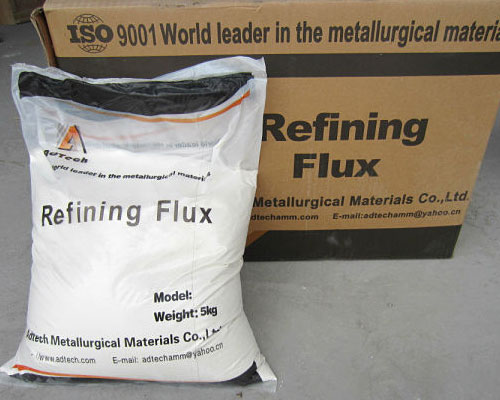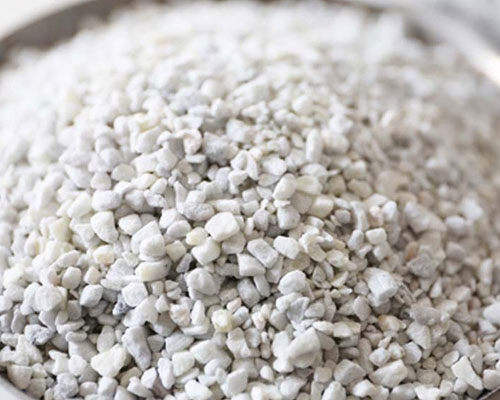The refining agent for aluminum is a white powder or granular solvent, which is prepared by mixing and mixing various inorganic salts after drying treatment. The refining agent is mainly used to remove the hydrogen and floating oxidized slag inclusions in the aluminum liquid, so that the aluminum liquid is more pure, and it has the function of removing slag.
One of the main defects of cast aluminum alloy is pinholes and non-metallic inclusions. When smelting aluminum alloy, the quality of charge, tools, and climate are the potential conditions that cause alloy gas and non-metallic slag inclusions. More than 90% of the gas contained in the aluminum alloy is hydrogen. Ionic hydrogen has a greater solubility in the aluminum alloy liquid, but as the temperature decreases, the solubility decreases accordingly. A large amount of hydrogen precipitates during the solidification process to form pinholes, which seriously affects the quality of the casting. Therefore, degassing treatmen must be carried out when smelting aluminum alloy.
In order to solve the problem of degassing of aluminum alloy and non-metallic slag inclusions, nitrogen degassing and ceramic foam filtering and refining are used at home and abroad.
For this reason, after many experiments and comparisons, the refining agent for aluminum produced by AdTech can meet the above requirements and is the most ideal refining agent for good degassing and removing non-metallic inclusions. This refining agent has a good spread. Openness, separation and refining, used for aluminum alloy degassing and non-metallic slag inclusions.
The aluminum alloy solution treated with this refining agent, observe the pouring riser, and there is no bubble overflow. The pinholes of aluminum alloy castings are usually reduced to level 5. Generally, the pores of the castings are level 8 or 25% of the parts do not exceed level 4. qualified. All the refining agents in our factory have exceeded the above requirements through use, reaching about level 1.

In use, the refining agent for aluminum, the crystallization of aluminum alloy is finer than before degassing, and it is in tensile strength and elongation. The hardness has been improved to different degrees. The above data are all sand-molded, as-cast, and without modification. Such as the deterioration of sodium salt, the performance can be further improved.
Used for purification treatment of aluminum alloy melt. It has the ability to degas and adsorb slag inclusions to float to the surface of the aluminum solution and form dry slag.
The refining agent has good spreadability, separation and refining properties, and has a wide range of applications and is convenient to use.
It has outstanding degassing and slag removal effects, as well as H2 removal and covering effects. It has a thorough slag removal, and the metal content and non-metallic slag inclusions in the slag are greatly reduced.
After the refining agent is added to the aluminum melt, the aluminum melt can be made to have good fluidity and form an isolation covering layer, which has good anti-gas absorption performance, inhibits hydrogen absorption and prevents oxidation.
After the refining agent is added to the aluminum melt, the powdery slag that separates from the melt will be generated-strong degassing and slag removal ability.
The silicon tetrafluoride in the refining agent is easy to decompose, resulting in the ability to combine with hydrogen at high temperatures, forming silicofluoric acid, and achieving the effect of exhaust. During the melting process, the oxide film on the aluminum alloy surface is due to its greater tension . It prevents the overflow of gas. When the refining agent is added, AI2O3 is reduced, so that hydrogen has a chance to overflow and achieve the effect of degassing. In addition, AI2O3 is an interface substance that causes bubbles to be produced in the casting. When AI2O3 is reduced, the conditions for forming bubbles are reduced, so the pores in the casting are greatly reduced.

